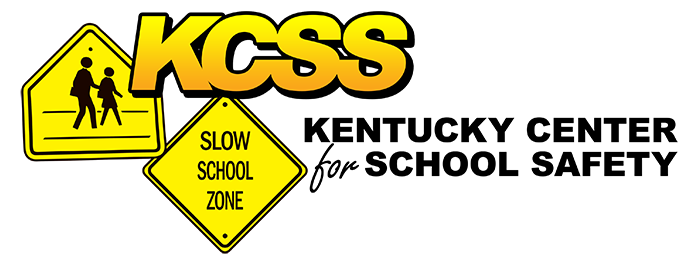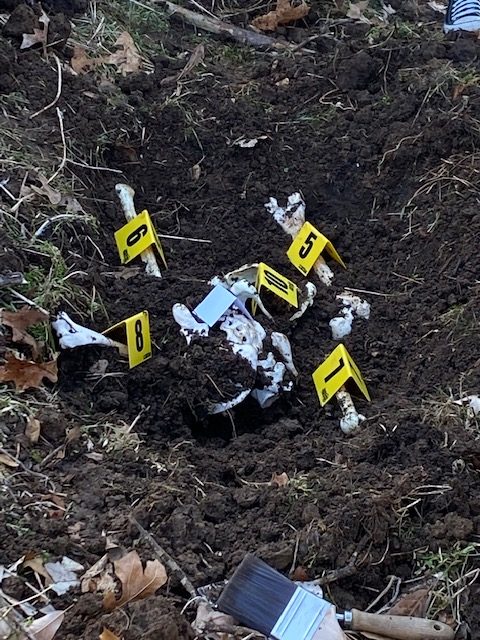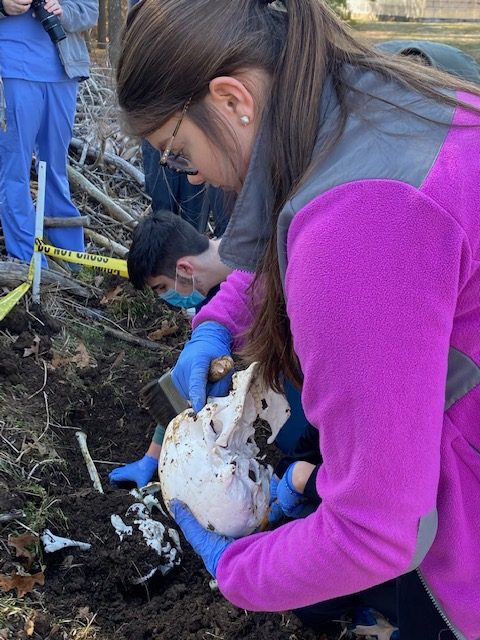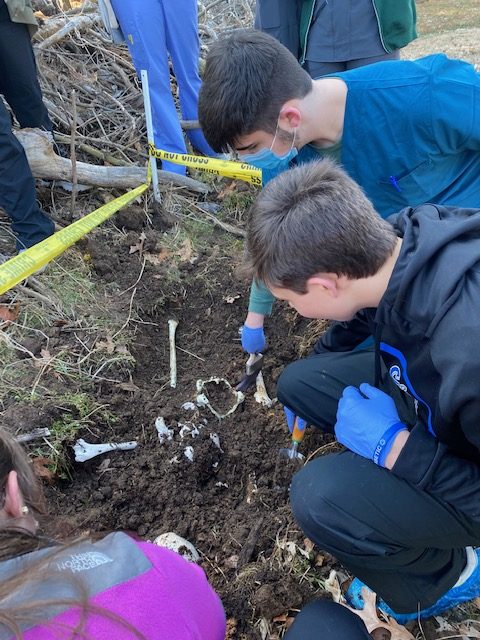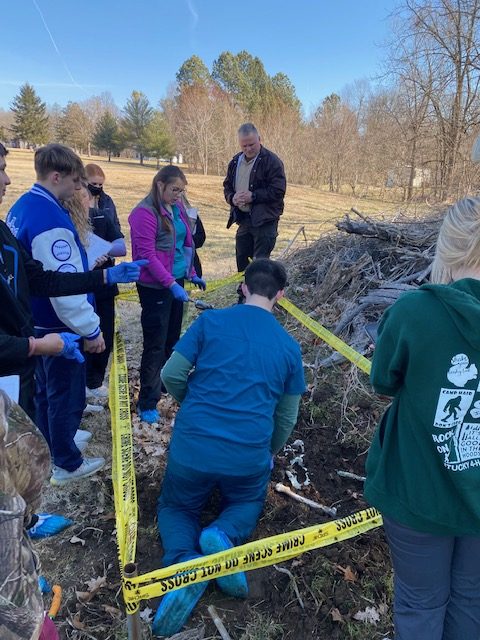Submitted by Lee Ann Morrison, Research Fellow, and Justice and Law Enforcement, Kentucky Center for School Safety
From the desk of Tiffany Blazina, Personnel/Public Relations Director of Crittenden County Schools
Officer John Shofner spent National School Resource Officer Day doing what he loves best–interacting with students. Working with high school teacher Casey Evans, facilitator of the district’s biomedical pathway, Shofner created an outdoor crime scene in alignment with Project Lead The Way’s “Sherlock Bones,” part of the curriculum’s Human Body Systems course.
Evans explained that prior to the outdoor investigation, students prepared inside the classroom in order to effectively complete the activity. Students used mannequins to identify all of the bones of the body and skull. They built a face onto their mannequins, attaching three muscles to bone landmarks (temporalis, orbicularis oris, and orbicularis oculi).
“All of these hands-on learning experiences allowed students to learn how bones create the identity of a person,” said Evans. “Now, they are going to learn how they can tell a story. They will learn how the specific structure of your bones can hold information about your sex, height, age, health, and ancestry.”
To introduce the crime scene, students were told that a couple of joggers who were running through the park (the wooded area behind the school’s greenhouse) noticed what appeared to be a human skull sticking out of a brush pile. The students were called in to investigate.
At the site, students were divided into four teams: bones recovery team, photography team, evidence gatherers, and scribes. Using tools and forensic investigation skills, the recovery team worked to delicately unearth the bones. They learned that the skull was not the only bone found and proceeded to find a shallow grave that surprisingly revealed a second skull. Evidence gatherers documented each piece of evidence, marking and bagging them for further lab investigation. Scribes worked to document key details of each piece of evidence discovered, while photographers took photos of the scene from all angles, while also photographing each piece of evidence. Officer Shofner guided the teams on performing these roles.
“They have a great eye for detail,” said Shofner. “I’m very impressed at the level at which they performed their roles.”
Following the crime scene investigation, Evans said students will take the bones back to the classroom lab to analyze them. Working together, they will make final determinations on sex, height, ancestry, and age based on their research and analysis. They’ll then work as DNA forensic analysts to evaluate DNA samples found in the bones and compare those unique DNA fingerprints to known missing persons.
Evans said the entire process provides valuable skills and lessons that span more than just the biomedical curriculum.
“In addition to learning critical lab skills like measuring, pipetting, and gel electrophoresis that will make them competitive at any college or career they pursue, they are learning to think critically and collaborate with a team.”
Sophomore Jeremiah Foster said the experience will help him as he considers a possible career in sports medicine. “This class prepares you for the real world, where you have to work for what you have,” said Foster.
Evans agrees.
“Biomedical students will have an advantage in any career they choose,” she said, “whether it’s in health sciences, forensics, or another pathway altogether. Students have a hands-on learning experience that provides the critical thinking, communication, leadership, and team work skills necessary to be successful in life and their careers.”
